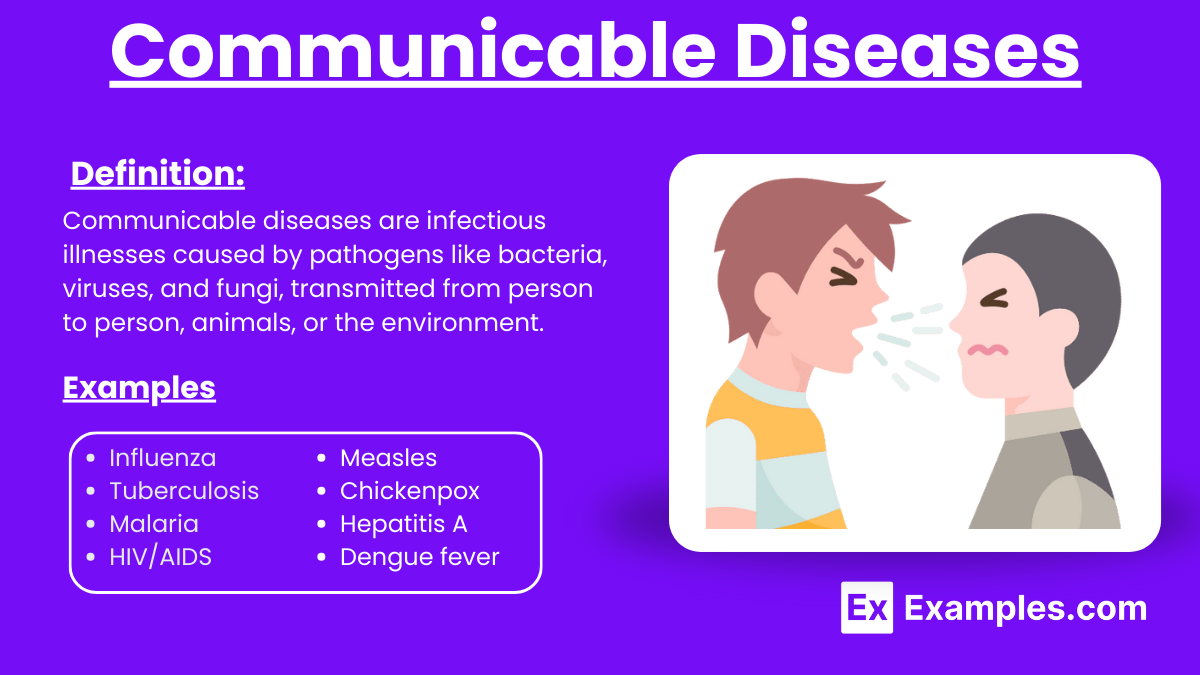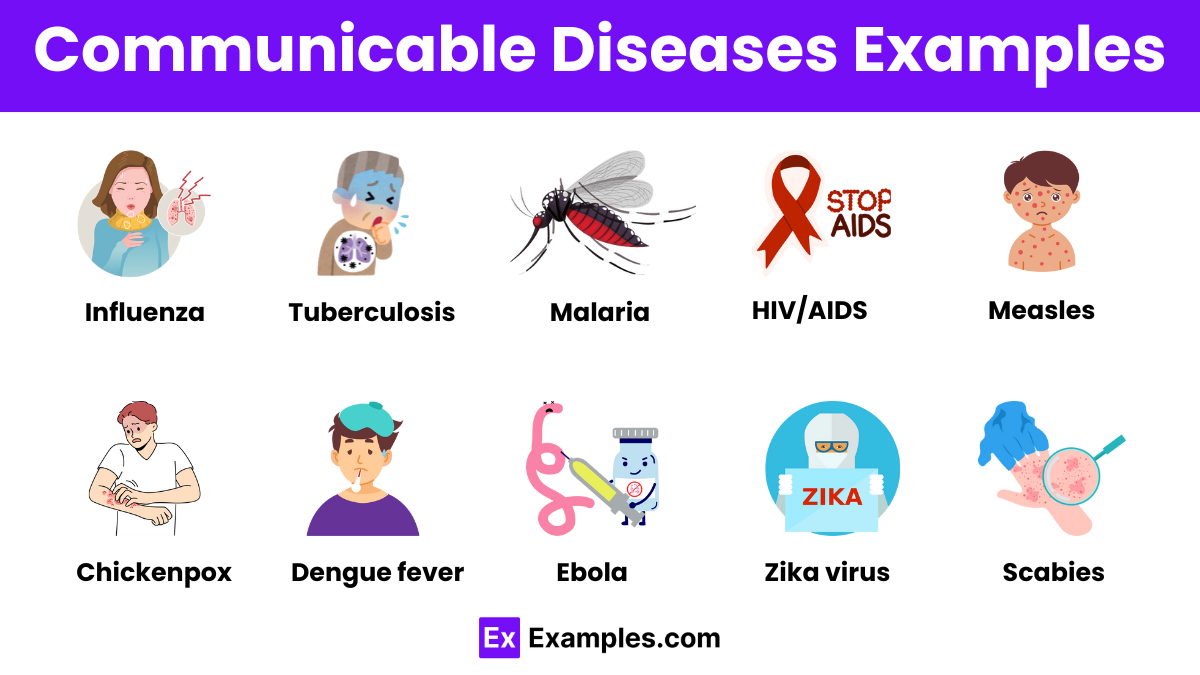What is the primary way communicable diseases spread from one person to another?
Through contaminated food
Through direct contact with infected individuals
Through contaminated water
Through air travel


Communicable diseases, also known as infectious diseases, are illnesses caused by pathogens such as bacteria, viruses, fungi, and parasites. These diseases can spread directly from person to person, through contact with contaminated surfaces, or via vectors like mosquitoes. Examples include influenza, tuberculosis, and malaria. Effective prevention and control measures, including vaccination, proper hygiene, and public health interventions, are crucial in reducing the spread and impact of these diseases globally.
Communicable diseases are infectious illnesses caused by pathogens like bacteria, viruses, fungi, and parasites. They spread through direct person-to-person contact, contaminated surfaces, or vectors like mosquitoes. Examples include influenza, tuberculosis, and HIV/AIDS.

| Feature | Communicable Diseases | Noncommunicable Diseases |
|---|---|---|
| Definition | Diseases caused by pathogens and spread from person to person or via vectors. | Diseases not caused by infectious agents and not transmissible between individuals. |
| Examples | Influenza, HIV/AIDS, Tuberculosis, Malaria, COVID-19 | Diabetes, Hypertension, Cancer, Heart Disease, Asthma |
| Causes | Bacteria, viruses, fungi, parasites, prions | Genetic factors, lifestyle choices, environmental factors |
| Prevention | Vaccination, good hygiene, safe food and water, isolation | Healthy diet, regular exercise, avoiding tobacco and alcohol, regular health screenings |
| Treatment | Medication (antibiotics, antivirals), isolation, supportive care | Medication, lifestyle changes, surgery, chronic disease management |
| Transmission | Person-to-person contact, contaminated surfaces, vectors (mosquitoes, ticks) | Not transmissible; influenced by genetic and environmental factors |
| Impact on Public Health | Often cause outbreaks or epidemics, require immediate public health response | Long-term health management, major contributors to global mortality and morbidity |
They spread through direct contact, contaminated surfaces, or vectors like mosquitoes.
Examples include influenza, tuberculosis, HIV/AIDS, and COVID-19.
Symptoms vary but can include fever, cough, fatigue, and body aches.
Practice good hygiene, get vaccinated, and avoid close contact with sick individuals.
Treatment involves medication, supportive care, and sometimes isolation.
Yes, some communicable diseases can be severe and lead to death if not treated.
Vaccines boost the immune system and prevent many communicable diseases.
Diagnosis is made through medical history, physical examination, and laboratory tests.
No, antibiotics are effective against bacterial infections but not viral or fungal infections.
Communicable diseases are infectious and can spread, while noncommunicable diseases are not contagious.
Text prompt
Add Tone
10 Examples of Public speaking
20 Examples of Gas lighting
What is the primary way communicable diseases spread from one person to another?
Through contaminated food
Through direct contact with infected individuals
Through contaminated water
Through air travel
Which of the following is NOT a common mode of transmission for communicable diseases?
Airborne transmission
Vector-borne transmission
Genetic transmission
Fecal-oral transmission
Which type of pathogen is responsible for diseases such as the flu and the common cold?
Bacteria
Virus
Fungus
Protozoa
What is the primary purpose of vaccination in relation to communicable diseases?
To treat existing infections
To prevent the spread of diseases
To enhance the immune response
To eliminate all pathogens
Which of the following diseases is primarily transmitted through insect bites?
Tuberculosis
Malaria
Chickenpox
Measles
How can practicing good hygiene help prevent the spread of communicable diseases?
By increasing the number of pathogens
By enhancing genetic diversity
By reducing exposure to pathogens
By promoting unhealthy behaviors
Which of the following is a symptom commonly associated with many communicable diseases?
Increased appetite
Fever
Heightened energy levels
Improved memory
What is the role of antibiotics in managing communicable diseases?
They cure viral infections
They prevent all types of infections
They treat bacterial infections
They promote the spread of pathogens
Which communicable disease is caused by a parasite?
Influenz
Tuberculosis
Giardiasis
Measles
What is herd immunity, and why is it important in controlling communicable diseases?
It occurs when a majority of the population is infected
It protects individuals who cannot be vaccinated
It guarantees the elimination of all diseases
It is achieved only through medication
Before you leave, take our quick quiz to enhance your learning!

